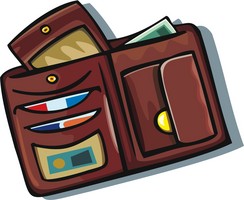Borrowing in 2009

If you’re planning to buy a home or a car in 2009, the process is going to be a lot tougher without an excellent credit score and a significant down payment. So that means you’re going to have to work harder—and possibly wait a little longer—to make those key purchases.
What’s a good credit score? According to credit scoring giant Fair Isaac Corp., the best FICO score range as of late 2008 stood at 760-850, according to reports; that minimum is roughly 20 points higher than it would have been a year ago.
Barring any major federal action to loosen up these markets on the consumer level, these factors make it particularly important to make sure there are no skeletons in your credit closet.
The Federal Reserve Board’s statistics show that outstanding consumer credit has increased from a bit more than $2 trillion in 2003 to $2.5 trillion by the end of the second quarter of 2008, representing a 25 percent increase over five years. These high levels of debt, combined with a global credit crunch, have tightened up lending to all but the best customers–and they’re having trouble too.
If you have extraordinarily high debt levels, a record of late payments or very little money to put down on that home or car, you need to do some advance planning before you contact any lenders. Here are issues you need to incorporate into your planning:
Get some advice: You might be focused on paying down debt or saving up your down payment, but credit is only one part of your lifetime financial picture. It might be a good idea to talk with a tax professional or a financial planner to learn how to best use credit. It’s always good to determine what your limits should be.
Pay down the balances you have: Next year, Fair Isaac Corp., the company that created the FICO score, will be adjusting the way it computes its credit scores. One of the top changes will be a greater negative weight on credit utilization–how close you get to the borrowing limit of each of your accounts. The company says that for optimal scoring, each account’s outstanding credit should be no more than 50 percent of the credit line and hopefully less. As you’re paying down your balances, it’s wise to focus on the highest-rate credit cards or loans first.
Set a credit report review schedule: You have the right to get all three of your credit reports—from Experian, TransUnion and Equifax—once a year for free. You can do so by ordering them at www.annualcreditreport.com. Don’t order all three of them at the same time, though. By spreading out the dates you receive each of your credit reports, you’ll get a continuous view of how your credit picture looks because the three bureaus feed each other the latest information. It’s a good way to clean up errors and keep a steady watch for identity theft. By the way, all those ads that advertise free credit reports? Most of them will demand a credit card number from you, which means at some point those reports won’t be free. The aforementioned Web site is the best place to get reports that are truly free of charge.
Pay on time and pay more than the minimum. If you’ve been late with payments or have stuck only to paying the minimums, it’s time to give that up now. Here’s what you do. To avoid late payments, note the due dates when the bills arrive and then set a date for payment five to seven days ahead so you’ll definitely be able to mail your payment on time. To put more toward the balance, finally do a budget–this will help you identify the non-essential spending you’ve been doing so you can pay your outstanding credit balances faster.
Cut up cards, but don’t close the account: Closing accounts—even those that have had zero balances for years—is a bad idea. Lenders want to see a long record of responsible credit management, and longtime accounts that you haven’t touched in years may actually help your score because it shows you have some restraint.
No-doc or low-doc loans? Find another way: If you are self-employed or otherwise don’t have a lot of verifiable income, you may have the most trouble getting a loan. While banks and other lenders two years ago might have bent over backwards to lend to people with unverifiable income, that gravy train is mostly over now. If you do get a loan, you’ll pay far more for it than you would have before the credit markets blew up.
This article is produced by the Financial Planning Association, the membership organization for the financial planning community, and is provided by Walter Edelstein, CFP, a local member of the FPA.




